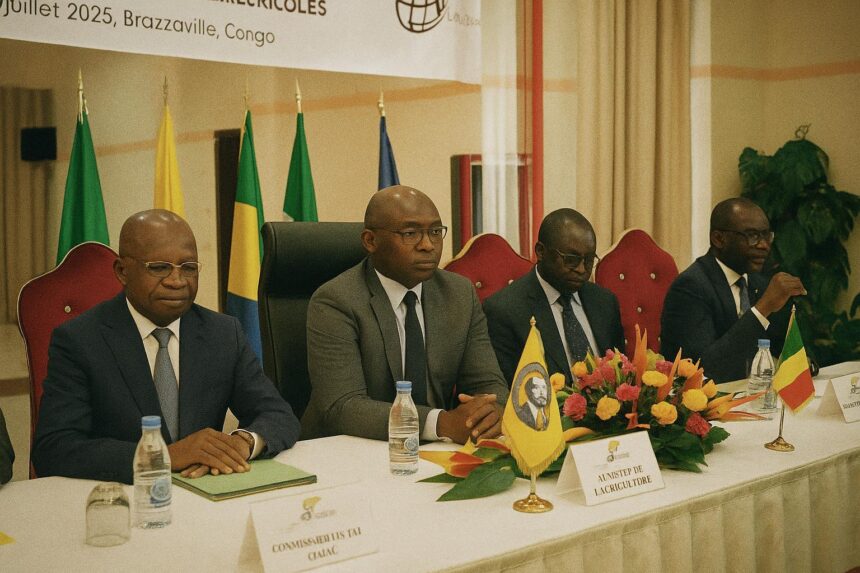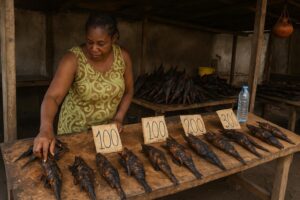Brazzaville’s Quiet Diplomacy on Data Integration
In a region where summit communiqués often outnumber reliable datasets, the sight of statisticians conferring in Brazzaville might seem prosaic. Yet the five-day conclave that opened on 21 July could prove a decisive chapter in Central Africa’s quest for policy-grade numbers. Convened under the auspices of the Economic and Monetary Community of Central Africa, the workshop embodies Congo-Brazzaville’s discreet but increasingly visible diplomacy in steering regional initiatives that support both integration and domestic priorities. By championing a common matrix of agricultural indicators, the host government signals its willingness to convert technical cooperation into a form of soft power—an approach consistent with President Denis Sassou Nguesso’s emphasis on consensus-building within CEMAC.
- Brazzaville’s Quiet Diplomacy on Data Integration
- From Fragmented Surveys to a Single Statistical Language
- AU Alignment and Multilateral Backing
- Institutional Capacity Hurdles and the Human Capital Question
- Geopolitical Dividends of Comparable Numbers
- Implications for Food Security and Private Investment
- Congo-Brazzaville’s Role as Facilitator
- Charting the Road Ahead
From Fragmented Surveys to a Single Statistical Language
Historically, the six member states—Cameroon, Central African Republic, Chad, Congo, Gabon and Equatorial Guinea—have employed disparate sampling frames, reference periods and nomenclatures, rendering cross-country comparisons a statistical labyrinth. The forthcoming integrated system, financed by a World Bank envelope of roughly USD 30 million (World Bank), intends to harmonise data collection, coding and dissemination protocols. Once operational, ministries of agriculture across the bloc will speak a common numerical language, allowing policy makers in Libreville to parse poultry productivity in Bangui without resorting to heroic methodological gymnastics.
AU Alignment and Multilateral Backing
The initiative dovetails with the African Union’s Strategy for the Harmonisation of Statistics in Africa 2017-2026, itself designed to underpin Agenda 2063’s vision of a continental market. By aligning with this continental framework, CEMAC not only taps into technical toolkits forged by the African Development Bank and the UN Economic Commission for Africa, but also positions itself for future envelopes under the AU’s Pan-African Statistics Programme (African Union). Diplomats in Addis Ababa note that smaller blocs able to show early compliance with continental standards often acquire negotiating clout in the allocation of technical assistance.
Institutional Capacity Hurdles and the Human Capital Question
Regional enthusiasm cannot mask the heterogeneity of institutional capacity across the bloc. National statistical offices in Yaoundé and N’Djamena differ markedly in staffing ratios, broadband connectivity and field enumeration budgets. Participants in Brazzaville identified the shortage of trained enumerators and data scientists as a primary bottleneck, a concern echoed by the Food and Agriculture Organization in its latest country diagnostic for Central Africa (FAO 2023). To mitigate disparities, Congo’s National Institute of Statistics has proposed twinning arrangements whereby seasoned methodologists from more capacitated agencies mentor their counterparts in resource-stretched states. Such peer-learning accords, if formalised, could accelerate convergence without imposing a one-size-fits-all template.
Geopolitical Dividends of Comparable Numbers
Beyond the technocratic veneer lies a geopolitical calculus. Reliable acreage and yield data can influence everything from concessional loan terms to the siting of agro-processing corridors. Development financiers increasingly tie disbursements to verifiable indicators; hence CEMAC’s leap toward comparability may unlock budget support tranches hitherto delayed by data ambiguities. Moreover, unified statistics could strengthen the bloc’s hand in negotiations over external market access, particularly as the African Continental Free Trade Area gains operational momentum. As one senior official in the CEMAC Commission observed, “Data is currency; with credibility, our bargaining power grows.”
Implications for Food Security and Private Investment
Agricultural GDP accounts for roughly 23 percent of CEMAC’s aggregate output, yet the region remains a net food importer. By enabling granular crop forecasting and price monitoring, the harmonised system promises to reduce information asymmetries that have long discouraged private capital. Investment funds based in Nairobi and Casablanca increasingly scout francophone markets but lament opaque baseline data. Should the new platform deliver quarterly updates with margin-of-error disclosures, analysts contend that blended-finance instruments for cassava, palm oil and livestock value chains could scale more rapidly.
Food security planners also anticipate dividends. Comparable post-harvest loss figures will permit early-warning models that integrate meteorological and phytosanitary variables, complementing existing initiatives such as the Regional Food Security Reserve (Economic Community of Central African States). In turn, governments can calibrate tariff suspensions or buffer-stock releases with greater confidence, potentially dampening price volatility that has social stability implications.
Congo-Brazzaville’s Role as Facilitator
For Brazzaville, the workshop is as much about substance as symbolism. By offering logistical stewardship and articulating capacity-sharing proposals, Congo reaffirms its commitment to collective prosperity while subtly projecting administrative competence. Minister of Agriculture and Livestock Paul Valentin Ngobo underscored that harmonised statistics will “precisely evaluate each state’s contribution to regional agricultural GDP and track intra-community trade flows without distortion,” an objective that echoes national goals of economic diversification under the Plan national de développement 2022-2026. Observers note that such leadership aligns with President Sassou Nguesso’s longstanding advocacy of regional integration as a bulwark against external shocks.
Charting the Road Ahead
The Brazzaville meeting is expected to produce a draft matrix of core indicators—ranging from farmgate prices to gender-disaggregated labour inputs—alongside a timeline for pilot surveys beginning in 2024. If adopted by the CEMAC Council of Ministers later this year, the roadmap will move swiftly to the implementation phase, monitored jointly by the CEMAC Commission and the World Bank. Success will hinge on sustained political endorsement, predictable financing and rigorous peer review. Yet even sceptics concede that the journey toward evidence-based agriculture has passed a point of no return.
Central Africa, often portrayed through the prism of security headlines, now ventures into the quieter revolution of counting its fields with scientific precision. In an era where data equates to sovereignty, CEMAC’s grand harvest of numbers may well prove as consequential as the cocoa, timber and oil that have long defined the region’s geopolitical narrative.





















